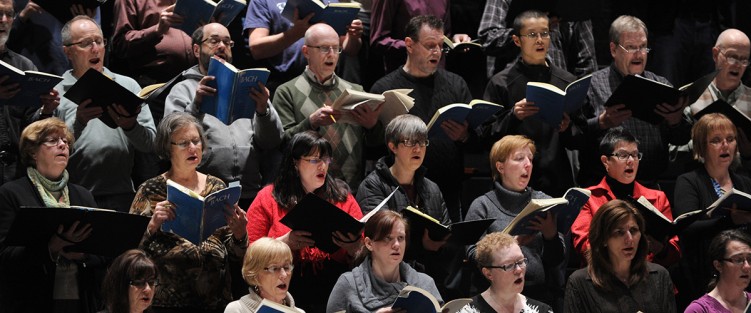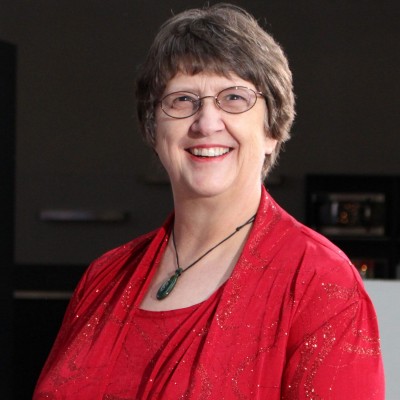 Anyone who sings in a choir has likely seen the tragic story of the Amsterdam Mixed Choir where after a performance of the Bach St John Passion, 102 of the 130 choristers were sickened by COVID-19. One of those members would pass away from the virus in the following weeks, just as news also broke of the Skagit Valley Chorale in Washington State where 52 members would ultimately be infected, with two deaths. Smaller group outbreaks were noted in other choirs around the world such as the Berlin Cathedral Choir and in many faith-based settings. The headlines are enough to make any person take pause. The choral community has been shaken particularly hard by these stories as, for many, choir is their escape from the pain and stress of the world, not the cause of it.
Anyone who sings in a choir has likely seen the tragic story of the Amsterdam Mixed Choir where after a performance of the Bach St John Passion, 102 of the 130 choristers were sickened by COVID-19. One of those members would pass away from the virus in the following weeks, just as news also broke of the Skagit Valley Chorale in Washington State where 52 members would ultimately be infected, with two deaths. Smaller group outbreaks were noted in other choirs around the world such as the Berlin Cathedral Choir and in many faith-based settings. The headlines are enough to make any person take pause. The choral community has been shaken particularly hard by these stories as, for many, choir is their escape from the pain and stress of the world, not the cause of it.
In the absence of clear scientific evidence, the precautionary principle has provided the only guidance available to choirs throughout much of the pandemic so far. Organizations have not waited to take strict action, instead choosing to comply with blanket safety, quarantine and shutdown measures. For every choir in Ontario, it is now over three months since any rehearsals. Seasons were ended early, summer festivals are cancelled, tours are out of the question, and uncertainty reigns, with planning for next season made difficult by differing assumptions of what may be.
The choral world is not a small industry and leaders have convened to provide coherence amidst the confusion. On June 23, an open letter was released by heavy hitters of the Canadian choral world including Lydia Adams of the Elmer Iseler Singers, Ivars Taurins of Tafelmusik, Kari Turunen of the Vancouver Chamber Choir and Mark Vuorinen of the Grand Philharmonic Choir, amongst many others.
 “With new studies being published from various worldwide sources re-evaluating earlier claims on the risk of singing and the transmission of Covid-19, we feel that a new dialogue must ensue to ensure a safe, prudent return to choral singing in our communities on an equal footing with the reopening of other sectors,” states the letter.
“With new studies being published from various worldwide sources re-evaluating earlier claims on the risk of singing and the transmission of Covid-19, we feel that a new dialogue must ensue to ensure a safe, prudent return to choral singing in our communities on an equal footing with the reopening of other sectors,” states the letter.
“We ask for a more collaborative dialogue in establishing guidelines on reopening this important sector of society, as has occurred in industries with similar health concerns. To segregate one important activity that impacts so much of Canada’s culture, history, economy, tourism, education and mental health, is troublesome for all of us and has not provided a balanced, positive and safe way to move forward into the future.”
This followed a day after a letter written by Vuorinen in his capacity as president of Choirs Ontario, stating “we are asking for public health departments to help the tens of thousands of choristers in this province by providing clear and actionable guidelines for choral singing that are guided by science.”
The letters argue that with the exception of the high-profile superspreader events in Skagit Valley and Amsterdam, there is little other evidence connecting choral singing to high-risk spread of COVID-19. Both letters reference a variety of sources that are starting to build scientific evidence of transmission risks, but haven’t indicated any compelling evidence of singing as higher risk compared to other now-permissible activities like eating in restaurants, or others for which there is a path to resumption, such as working out in gyms.
Alarms have sounded in the choral community about safe resumption of activities for many weeks now. On May 5, the Barbershop Harmony Society along with Chorus America hosted a webinar titled Science and the Near-Term Future of Singing. Dr. Donald Milton, professor of Environmental Health at the University of Maryland and otolaryngologist Dr. Lucinda Halstead of the Evelyn Trammell Institute for Voice and Swallowing at the Medical University of South Carolina presided.
Dr. Milton presented based on his expertise concerning bioaerosols, exhaled breath analysis and respiratory epidemiology. “Some people generate many more times than everyone else does…It turns out that what’s going on is that when you exhale, if you exhale all the way down to residual volume, really get all the air out of your lungs, you collapse small airways. And when you take a deep breath, you pop those airways open and there’s a little fluid film that breaks. And on the next breath, you exhale it.” He notes that this is variable, and fluid increases with aging and with infection. Later, based on his interview with a chorister in a large ensemble that also had an outbreak, he surmised that “the better trained singer you are, the more you’re going to use all your total lung capacity. You are going to collapse small airways and take a deep breath for that next measure and open up those airways and if you’re projecting your voice… I’m sure you can project a good volume.”
Dr. Halstead was asked if there was a way to have a safe rehearsal; her blunt answer was “No. You can’t. Unless it’s a small group and it’s outside and the wind is not at your back.” On the question of when it’s safe to sing again. Dr. Halstead said, “It’s going to take a long time. If we had a vaccine that was effective and treatments that had a 95 percent cure rate, that would be the most safe and you would probably have very little to worry about.”
For most choristers, the absence of conclusive scientific evidence is enough to prevent them from getting back into rehearsal and singing the way they were before the pandemic. To help answer and address some of the uncertainty, Choral Canada convened an online webinar on May 22 to talk about the future of choral music in light of the pandemic. The webinar was joined by Dr. Joan Robinson, a pediatrician and University of Alberta professor specializing in infectious diseases.
 Choral Canada, representing 28,000 choirs across Canada, presented alongside the leads of various choral sectors across the industry. Dr. Robinson presented her best assessment of available recommendations informed by her background in infectious diseases. Some of her key points: “Singing produces more and smaller droplets than does talking. Smaller droplets stay in the air longer but will have less virus than larger droplets so may be no more infectious.” Robinson also notes that there seems to be some evidence that there are people who release more droplets than other people, superspreaders like those mentioned by Dr. Milton to Chorus America.
Choral Canada, representing 28,000 choirs across Canada, presented alongside the leads of various choral sectors across the industry. Dr. Robinson presented her best assessment of available recommendations informed by her background in infectious diseases. Some of her key points: “Singing produces more and smaller droplets than does talking. Smaller droplets stay in the air longer but will have less virus than larger droplets so may be no more infectious.” Robinson also notes that there seems to be some evidence that there are people who release more droplets than other people, superspreaders like those mentioned by Dr. Milton to Chorus America.
Robinson also explained how challenging it can be to determine if it is singing itself, or a related activity that caused the superspreader event, like sharing cookies or oranges during choir break, or even the putting away of contaminated folding chairs. Further, in smaller communities it is easier to contact trace exposure. For larger cities, if a chorister takes public transit to rehearsal and then home, or is out with friends prior to rehearsals, it’s difficult to ascertain the true source of infection.
“Obviously, the best option is to wait until there is no more COVID-19 in your community to meet. And I do think there’s a chance in about two months from now, we’ll go through a period of at least a few months where there really is no virus out there. Or maybe you can argue for meeting when there is COVID-19 in the community. Those with risk factors for death should not show up. Stand six feet apart as much as possible. Wide open spaces are way better than a small room. And obviously, no sharing of food and drink.”
The Ontario Ministry of Labour has issued over 100 guidance documents on infection control and prevention measures for different workplaces including salons, beaches, retail and factories, but there is no guidance for arts and cultural industries. The official plan for reopening Ontario broken into three stages does not include the reopening of concert and performance venues, stating: “Large public gatherings such as concerts and sporting events will continue to be restricted for the foreseeable future.”
Should choirs have the ability or inclination to reconvene, therefore, there would still be nowhere to perform except digitally.
“Maybe during this time we won’t be creating the greatest choral art, however you define that,” shared Dr. Adam Con, representing post-secondary and church choirs on the Choral Canada webinar, “but I continue to remind myself that it is better that my singers miss it than dread it.”
But when it comes to scientific evidence, infectious disease specialists can only provide guidance at this point as more research continues.
For many choirs, their membership skews older and more female-identified. Public Health Ontario numbers for June 26, 2020 indicate that women are contracting the disease more than men, representing 54 percent of all infections. Of 2644 known deaths in Ontario, 42.1 percent have been in those aged 60 plus. Approximately 64 percent of these are from long-term care and retirement homes.
In Skagit Valley, the American Center for Disease Control (CDC) investigated the event and released a detailed report. This report is one of the key sources of scientific evidence choirs can look to for potential risk. The report indicated the median age of infected choristers was 69 and 85 percent were female choristers.
The CDC discussion posited the following summary of infection spread: “Choir practice attendees had multiple opportunities for droplet transmission from close contact… and the act of singing itself might have contributed to SARS-CoV-2 [COVID-19] transmission. Aerosol emission during speech has been correlated with loudness of vocalization, and certain persons, who release an order of magnitude more particles than their peers, have been referred to as superemitters and have been hypothesized to contribute to superspreading events. Members had an intense and prolonged exposure, singing while sitting six to ten inches from one another, possibly emitting aerosols.”
Reviewing the possible spread associated with the listed activities, it is difficult to imagine a choral rehearsal that does not involve close contact, singing, loudness, and prolonged exposure. While some of these may
be mitigated with barriers or distance, the mechanics of rehearsal for
130 people, while remaining cohesive, presents exceptional challenges.
It is worth noting that the seating chart was examined by the CDC and was found to “not add substantive additional information” to the findings, despite knowing who the likely index individual was. However, the CDC as well as Dr. Robinson also noted that the Skagit Valley rehearsal was broken up into sectionals and they were not all in the same formation the entire rehearsal, further complicating the tracing of the spread.
Choral organizations have proven themselves resilient in the face of funding and recruitment issues in the past, even moving past assault and harassment allegations. But COVID-19 is something new, and it is very unclear whether a choir like the Skagit Valley Chorale or the Amsterdam Mixed Choir or a local choir can weather the uncertainty ahead. But as choirs move to Zoom and virtual performances, shifting their focus to community from performance-driven activity, there’s an opportunity to delve deeper into the reasons why people come together to sing and to spend the time and effort on community building.
 Elise Bradley, of the Toronto Children’s Chorus, for her part, shared a bit of hope on the Choral Canada webinar: “Zoom… will never replace choir. Nothing will replace the powerful synergy of the real thing. But as a mentor of mine used to say, ‘Never give up on something that you think about everyday.’ It is important to remember we’re not alone, we have each other.”
Elise Bradley, of the Toronto Children’s Chorus, for her part, shared a bit of hope on the Choral Canada webinar: “Zoom… will never replace choir. Nothing will replace the powerful synergy of the real thing. But as a mentor of mine used to say, ‘Never give up on something that you think about everyday.’ It is important to remember we’re not alone, we have each other.”
Follow Brian on Twitter @bfchang.
Send info/media/tips to choralscene@thewholenote.com.



